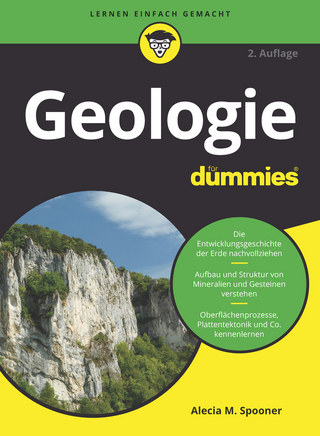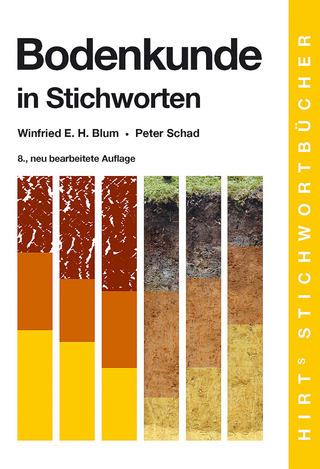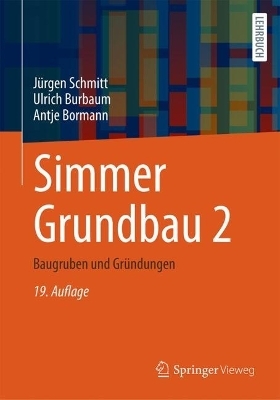
Geophysics and Geosequestration
Cambridge University Press (Verlag)
978-1-107-13749-3 (ISBN)
Geosequestration involves the deep geological storage of carbon dioxide from major industrial sources, providing a potential solution for reducing the rate of increase of atmospheric concentrations of carbon dioxide and mitigating climate change. This volume provides an overview of the major geophysical techniques and analysis methods for monitoring the movement and predictability of carbon dioxide plumes underground. Comprising chapters from eminent researchers, the book is illustrated with practical examples and case studies of active projects and government initiatives, and discusses their successes and remaining challenges. A key case study from Norway demonstrates how governments and other stake-holders could estimate storage capacity and design storage projects that meet the requirements of regulatory authorities. Presenting reasons for embracing geosequestration, technical best practice for carbon management, and outlooks for the future, this volume provides a key reference for academic researchers, industry practitioners and graduate students looking to gain insight into subsurface carbon management.
Thomas L. Davis is a Professor Emeritus at the Colorado School of Mines and founder of the Reservoir Characterisation Project (RCP), which received the Distinguished Achievement Award from the Society of Exploration Geophysics (SEG) in 2014. He is an active member of the SEG as an organiser for conferences, workshops and education programs, and has served as SEG's Second Vice President, Technical Program Chairman and Distinguished Lecturer. He has received the C. J. Mackenzie Award from the Engineering College of the University of Saskatchewan, the Milton B. Dobrin Award from the University of Houston, and the Deans Excellence and Melvin F. Coolbaugh Memorial Award from the Colorado School of Mines. Martin Landrø is a Professor at the Norwegian University of Science and Technology. Past positions include working as a research geophysicist and manager at IKU Petroleum Research and as a specialist at Statoil's research centre in Trondheim. He has won numerous awards including the Norman Falcon Award, Louis Cagniard award and Conrad Schlumberger award from the European Association of Geoscientists and Engineers; the Norwegian Geophysical Award; Statoil's Research Prize; the SINTEF award for outstanding pedagogical activity; the ENI award (New Frontiers in Hydrocarbons) and the IOR award from the Norwegian Petroleum Directorate. His research interests include seismic inversion, marine seismic acquisition and 4D and 4C seismic. Malcolm Wilson has worked within government, academia and the petroleum industry, and currently serves on the advisory council for the RCP (Colorado School of Mines) and on the International Advisory Board for Energy Academy Europe. He was instrumental in the creation of the IEA Greenhouse Gas Programme Weyburn Monitoring and Storage Project: an extensive research program for monitoring the storage of CO2 in an oilfield. He was also part of the IPCC special report on capture, transport and storage of CO2, and of the IPCC team that received the Nobel Peace Prize in 2007. Dr Wilson is an Adjunct Professor at Hunan University and with Engineering and Applied Science at the University of Regina, and has received the Alumni of Distinction Award from the University of Saskatchewan.
Part I. Introduction: 1. Climate change and the role of CCS in mitigation John Gale and Malcolm Wilson; 2. The role of geophysics in CCS David Lumley; 3. Goals of CO2 monitoring Thomas M. Daley and William Harbert; Part II. Geophysical Techniques: 4. Rock physics of CO2 storage monitoring in porous media Thomas M. Daley; 5. Multicomponent seismic monitoring Tom Davis and Martin Landrø; 6. Monitoring the deformation associated with the geological storage of CO2 Donald W. Vasco, Alessandro Ferretti, Alessio Rucci, Sergey V. Samsonov and Don White; 7. Gravity – surface and borehole Ola Eiken; 8. Estimating saturation and density changes caused by CO2 injection at Sleipner Martin Landrø and Mark Zumberge; 9. Electrical and electromagnetics methods Erika Gasperikova and Michael Commer; 10. Microseismic imaging of CO2 injection Shawn Maxwell; 11. Well logging Zaki Bassiouni; Part III. Case Studies: 12. CO2 storage offshore Norway Eva K. Halland; 13. Twenty years of monitoring CO2 injection at Sleipner Ola Eiken; 14. Case studies of the value of 4-D, multicomponent seismic monitoring in CO2 EOR and geosequestration Tom Davis, Scott Wehner and Trevor Richards; 15. Integrated geophysical characterization and monitoring at the aquistore CO2 storage site Don White; 16. Development and analysis of a geostatic model for shallow CO2 injection at the field research station, Southern Alberta, Canada Donald C. Lawton, Jessica Dongas, Kirk Osadetz, Amin Saeedfar and Marie Macquet; 17. Seismic and ERT 3D monitoring at the ketzin pilot storage site in Germany Christopher Juhlin, Stefan Lüth, Monika Ivandic and Peter Bergmann; 18. Time-lapse seismic analysis of the CO2 injection into the Tubåen Formation at Snøhvit Sissel Grude and Martin Landrø; 19. Illinois Basin – Decatur Project Robert A. Bauer, Robert Will, Sallie Greenberg and Steven G. Whittaker; Part IV. Summary: 20. What Next? Tom Davis, Martin Landrø and Malcolm Wilson.
| Erscheint lt. Verlag | 9.5.2019 |
|---|---|
| Zusatzinfo | 262 Plates, color; 17 Halftones, black and white; 304 Line drawings, black and white |
| Verlagsort | Cambridge |
| Sprache | englisch |
| Maße | 192 x 253 mm |
| Gewicht | 960 g |
| Themenwelt | Naturwissenschaften ► Geowissenschaften ► Geologie |
| Naturwissenschaften ► Geowissenschaften ► Geophysik | |
| Naturwissenschaften ► Geowissenschaften ► Meteorologie / Klimatologie | |
| ISBN-10 | 1-107-13749-7 / 1107137497 |
| ISBN-13 | 978-1-107-13749-3 / 9781107137493 |
| Zustand | Neuware |
| Informationen gemäß Produktsicherheitsverordnung (GPSR) | |
| Haben Sie eine Frage zum Produkt? |
aus dem Bereich


